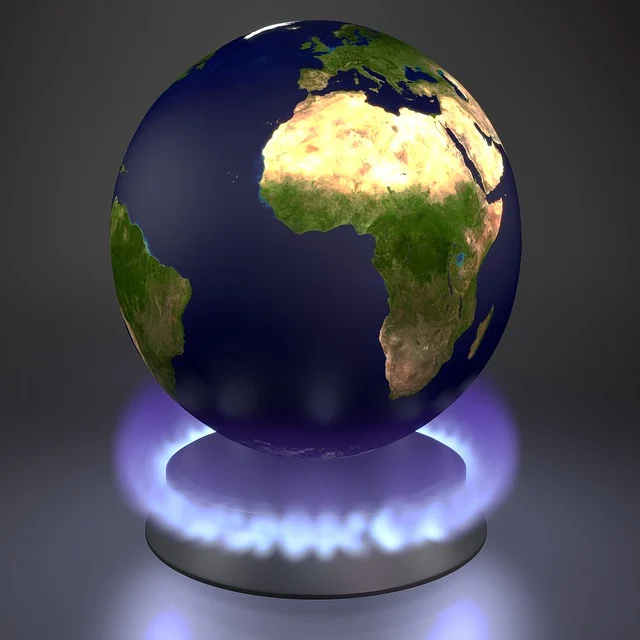Empowering Individuals: Combating Escalating Heatwaves and Global Warming


As heatwaves become more frequent and intense, and global warming continues to threaten our planet’s health, individuals play a crucial role in mitigating these challenges. Here are some effective strategies individuals can adopt to combat escalating heatwaves and global warming.

Page Contents
Empowering Individuals: Combating Escalating Heatwaves and Global Warming

| No. | Strategy | Description |
|---|---|---|
| 1 | Reduce Energy Consumption | Conserve energy at home and work to reduce greenhouse gas emissions by turning off lights, using energy-efficient appliances, and minimizing heating and cooling usage. |
| 2 | Choose Sustainable Transportation | Opt for walking, cycling, carpooling, or using public transportation when traveling alone to reduce carbon emissions from vehicles and alleviate urban heat island effects. |
| 3 | Support Renewable Energy | Switch to renewable energy sources like solar or wind power for homes or businesses and advocate for policies promoting clean energy adoption. |
| 4 | Reduce, Reuse, Recycle | Embrace the principles of reduce, reuse, and recycle to minimize waste generation and conserve resources, thereby reducing energy consumption and emissions. |
| 5 | Plant Trees and Greenery | Plant trees and vegetation to provide shade, absorb carbon dioxide, and release oxygen, helping to cool urban areas and combat global warming. |
| 6 | Conserve Water | Practice water conservation by fixing leaks, using water-saving appliances, and reducing water usage in landscaping to conserve resources and reduce energy consumption. |
| 7 | Advocate for Change | Use your voice to advocate for policies and initiatives that address climate change and support environmental protection efforts at local, national, and global levels. |
| 8 | Educate Yourself and Others | Stay informed about climate change and its impacts and share information with others to raise awareness and inspire action towards sustainable practices. |
| 9 | Practice Sustainable Food Choices | Choose locally sourced, organic, and plant-based foods to reduce carbon footprint and support sustainable agriculture practices. |
| 10 | Reduce Single-Use Plastics | Minimize plastic waste by using reusable bags, water bottles, and containers, and supporting businesses with sustainable packaging alternatives. |
| 11 | Support Conservation Efforts | Get involved in local conservation projects and support organizations dedicated to preserving natural habitats and biodiversity. |
| 12 | Be Prepared for Heatwaves | Stay informed about heatwave warnings and take precautions to protect yourself and others during extreme heat events. |
| 13 | Practice Sustainable Gardening | Use native plants and water-saving techniques in gardening to conserve water and create a resilient landscape that supports local biodiversity. |
| 14 | Reduce Air Pollution | Minimize air pollution by reducing car idling, using eco-friendly cleaning products, and avoiding the burning of fossil fuels for heating and cooking. |
| 15 | Support Green Businesses | Patronize businesses that prioritize sustainability and eco-friendly practices to drive market demand for green products and services. |
| 16 | Participate in Community Initiatives | Join community groups and environmental organizations to collaborate on local initiatives aimed at addressing climate change and promoting sustainability. |
| 17 | Practice Energy Conservation at Work | Encourage energy-saving practices in the workplace, such as turning off lights and using energy-efficient equipment, to reduce energy consumption and emissions. |
| 18 | Reduce Meat Consumption | Consider reducing meat consumption or adopting a plant-based diet to reduce greenhouse gas emissions associated with livestock production. |
| 19 | Support Carbon Offsetting Programs | Invest in carbon offsetting programs that fund projects aimed at reducing emissions, such as reforestation, renewable energy development, and methane capture initiatives. |
| 20 | Lead by Example | Be a role model for sustainable living by demonstrating eco-friendly practices and inspiring others to take action towards combating global warming and protecting the environment. |
By implementing these strategies in their daily lives, individuals can make a meaningful contribution to combating escalating heatwaves and global warming. Every action, no matter how small, has the potential to make a positive impact on the environment and create a more sustainable future for all.
Top 34 Countries Most Affected by Heatwaves and Global warming, Along with Brief Explanations
- Dhaka, Bangladesh: Vulnerable due to its low-lying coastal areas, high population density, and exposure to extreme weather events such as cyclones and floods.
- Chennai, Mumbai, Delhi in India: Faces heatwaves with temperatures exceeding 50°C, impacting agriculture, water resources, and public health, especially in densely populated urban areas.
- Karachi, Lahore in Pakistan: Prone to heatwaves and droughts, exacerbating water scarcity and agricultural challenges in already arid regions.
- Jakarta, Indonesia: Susceptible to heatwaves and rising sea levels, threatening coastal communities and biodiversity-rich ecosystems like coral reefs and rainforests.
- Manila in the Philippines: Experiences heatwaves and intense typhoons, leading to widespread damage to infrastructure, agriculture, and human settlements.
- Nigeria: Faces heatwaves and droughts, affecting agriculture, water resources, and exacerbating existing challenges such as food insecurity and poverty.
- Cairo, Egypt: Experiences extreme heatwaves, putting pressure on water resources, agriculture, and public health, particularly in densely populated urban areas like Cairo.
- Sudan: Prone to heatwaves and desertification, leading to land degradation, water scarcity, and displacement of communities.
- Ho Chi Minh City, Vietnam: Vulnerable to heatwaves, floods, and sea-level rise, threatening coastal regions, agriculture, and infrastructure.
- São Paulo, Rio de Janeiro, Brazil: Faces heatwaves, droughts, and wildfires, impacting biodiversity, agriculture, and indigenous communities in the Amazon rainforest and other ecosystems.
- Yemen: Susceptible to heatwaves and water scarcity, exacerbating humanitarian crises and conflict-driven displacement.
- Afghanistan: Faces heatwaves, droughts, and food insecurity, affecting agriculture-dependent livelihoods and exacerbating poverty.
- Iraq: Prone to heatwaves and water scarcity, impacting agriculture, public health, and exacerbating social and political tensions.
- Tehran, Iran: Vulnerable to heatwaves and droughts, threatening agriculture, water resources, and public health, particularly in urban areas like Tehran.
- Bangkok, Thailand: Experiences heatwaves, floods, and sea-level rise, affecting agriculture, tourism, and infrastructure in coastal regions.
- Somalia: Faces heatwaves, droughts, and food insecurity, leading to humanitarian crises and displacement of communities.
- Ethiopia: Prone to heatwaves, droughts, and food insecurity, exacerbating challenges in agriculture, water resources, and public health.
- Saudi Arabia: Susceptible to extreme heatwaves, impacting agriculture, water resources, and public health, particularly during the Hajj pilgrimage season.
- Colombia: Experiences heatwaves, droughts, and landslides, affecting agriculture, biodiversity, and infrastructure.
- Niger: Vulnerable to heatwaves, droughts, and food insecurity, exacerbating challenges in agriculture, water resources, and public health.
- Myanmar: Faces heatwaves, floods, and sea-level rise, threatening coastal regions, agriculture, and infrastructure.
- Mexico City, Mexico: Prone to heatwaves, droughts, and hurricanes, affecting agriculture, tourism, and infrastructure in coastal areas.
- Mozambique: Susceptible to heatwaves, floods, and cyclones, impacting agriculture, infrastructure, and public health.
- Ghana: Experiences heatwaves, droughts, and flooding, affecting agriculture, water resources, and public health.
- Kenya: Vulnerable to heatwaves, droughts, and food insecurity, exacerbating challenges in agriculture, water resources, and public health.
- Tanzania: Faces heatwaves, droughts, and floods, affecting agriculture, water resources, and public health.
- South Africa: Prone to heatwaves, droughts, and wildfires, impacting agriculture, water resources, and public health.
- Madagascar: Susceptible to heatwaves, droughts, and cyclones, threatening biodiversity, agriculture, and coastal regions.
- Cambodia: Experiences heatwaves, floods, and sea-level rise, impacting agriculture, tourism, and infrastructure.
- Venezuela: Vulnerable to heatwaves, droughts, and landslides, exacerbating socio-economic challenges and political instability.
- Shanghai, Beijing, Tianjin in China: High population, groundwater depletion, rapid urbanization, and soft soil conditions
- Amsterdam, Rotterdam in Netherlands: Soil compaction, peat oxidation, and water extraction for land reclamation
- Venice, Italy: Groundwater extraction, geological factors, and weight of historical buildings
- New Orleans, Houston in USA: Groundwater withdrawal, oil and gas extraction, and urban development.

Here’s a list of the top 30 fruits and vegetables that can help cool down the body during humid weather:
- Watermelon
- Cucumber
- Pineapple
- Mango
- Papaya
- Cantaloupe
- Honeydew melon
- Strawberries
- Blueberries
- Raspberries
- Grapes
- Oranges
- Peaches
- Kiwi
- Lemon
- Lime
- Grapefruit
- Bell peppers (especially green)
- Celery
- Lettuce (especially iceberg)
- Radishes
- Zucchini
- Tomatoes
- Spinach
- Broccoli
- Cauliflower
- Green beans
- Carrots
- Eggplant
- Asparagus
These fruits and vegetables are hydrating, low in calories, and rich in vitamins, minerals, and antioxidants, making them ideal choices for staying cool and refreshed during hot and humid weather. Incorporating them into your diet can help maintain hydration levels and support overall health and well-being.
Conclusion
These countries face a range of climate-related challenges due to their geographical location, exposure to extreme weather events, socio-economic vulnerabilities, and limited capacity for adaptation and resilience-building measures. Addressing the impacts of heatwaves and global warming requires concerted efforts at the local, national, and international levels to reduce greenhouse gas emissions, strengthen adaptation measures, and support vulnerable communities.







